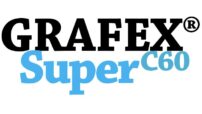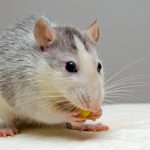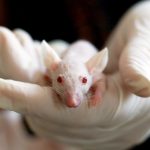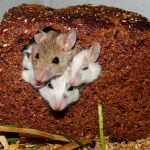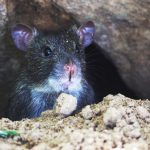This second testing was initiated as a follow up to the observations and results of Dr. Desantis’s study that was completed at the University of New York. The follow-on goal was to try and determine the qualitative and quantitative longevity benefits, teratogenicity, anti-inflammatory properties, and reduced tumorgenicity utilizing field mice.
Below is a summary of the records maintained on the overall testing of the Field Mice that were orally fed Grafex®Super [C-60] Fullerene material.
Initially, 12 Field Mice were purchased from a local pet store in July of 2015 and followed until the last surviving mouse died 29 months later in December of 2017. The store owner estimated that the average age of the mice to be about 12 weeks old. For our age calculation purposes, we reduced the estimated age to 8 weeks.
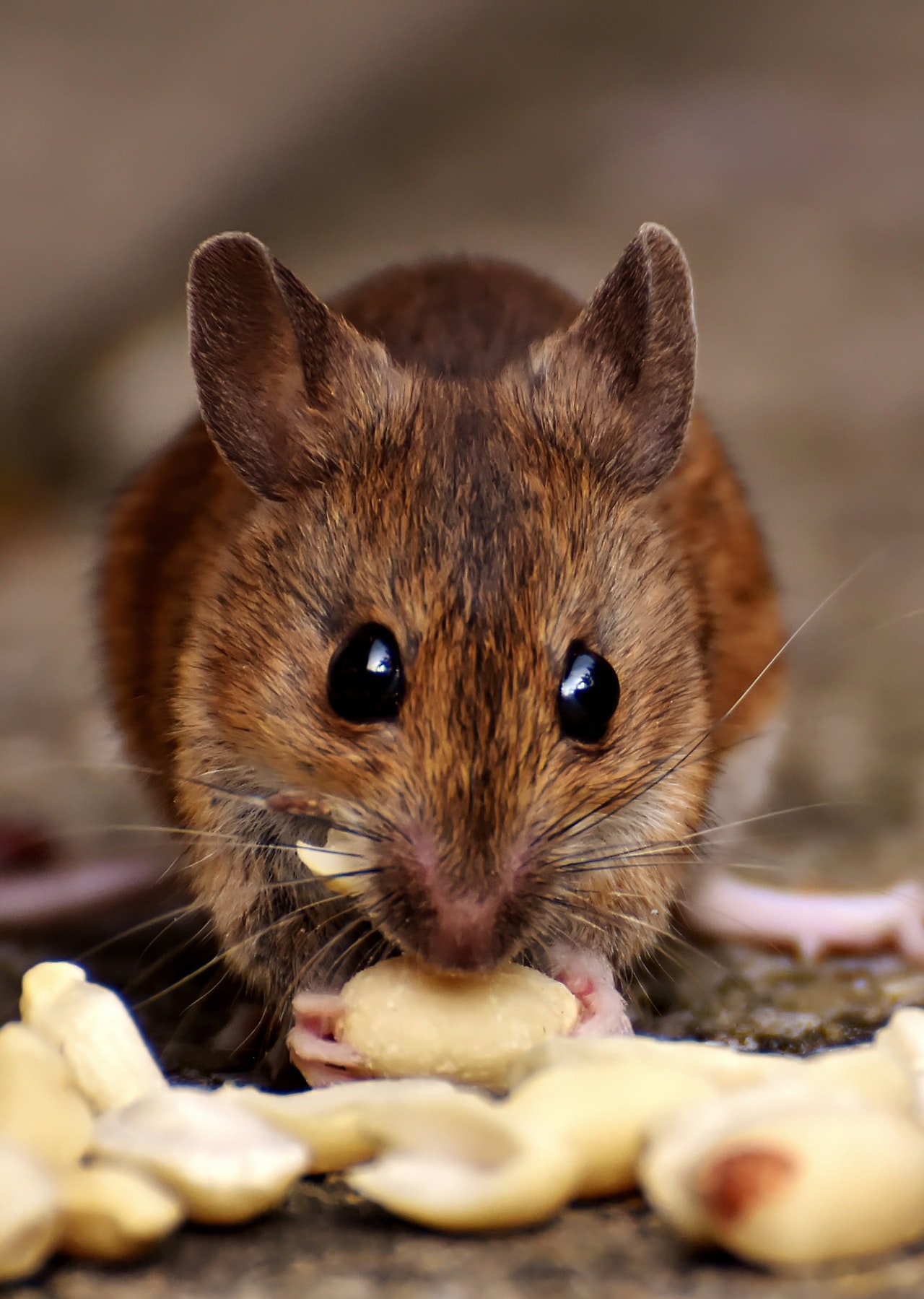
When adding the two months of age the mice were before the testing regimen began, the oldest mouse would have lived 31 months.
During the 29 month of semi controlled testing that was completed on the mice, 6 litters, consisting of two additional generations of 50 pups were born. All were found to be healthy with no known abnormalities or birth defects, confirming good biocompatibility and absence of teratogenicity.
A pair (two) of same gender mice were kept in 6 separate 12” by 24” dimension cages. They were supplied with exercise wheels, automatic water and food feeders, as well as floor mulch and private housing.
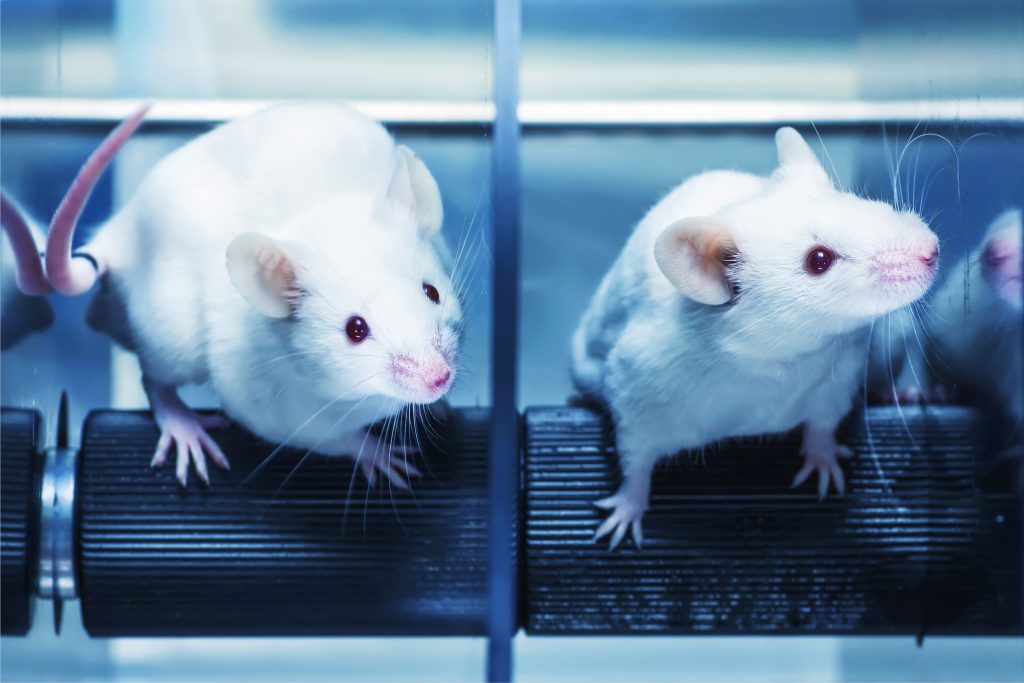
The testing environment was in a large warehouse in Northwest Florida whereas the mice was subjected to the environmental changing of the seasons.
Six separate test diets were selected:
The amount of food available to the mice was not controlled. They were allowed to eat, at will, as much as they wanted.
Cage # 1 pair was fed a combination of 113g of mouse food, 59g of coconut oil and mixed with(.5g) of Grafex.®
Cage #2 pair was fed a mixture/combination of 113g of mouse food in 59g of coconut oil (No Grafex® was given).
Cage # 3 pair was fed a combination of 113 g of mouse food, in 59 g of coconut oil and mixed with(1g) of Grafex®
Cage #4 pair was fed a /combination of 113g of mouse food, in 59g of coconut oil and mixed with(2g) of Grafex.®
Cage # 5 pair was fed (1.7)g of Grafex®powder(dry) mixed/ground up with 113g of mouse food. (No oil)
Cage # 6 pair (control mice) was fed mouse food only.
The biological benefits of Grafex®Super [C-60] quickly became apparent:
By week 9, the first 2 mice; food only, ‘control’ mice died. The second pair of “control” didn’t fare much better, surviving only 8 and 11 weeks.
Over the course of the study 4 additional “mice food only” control’ mice had to be added to the study. The average survival time for mice fed only mouse food was just over 14.7 weeks with the longest survival period of just 30 weeks achieved by 2 of the controls.

Of particular note was, the mice fed Grafex®Super [C-60] were (more active), especially the pair of mice that was fed the highest amount of Grafex®Super [C-60] . They had (better physical appearance) than those that were only fed mouse food or mouse food with coconut oil.
Coconut oil seemed to confer some benefit over just mouse food alone, as these mice survived an average of 55 weeks. However, the oldest living mouse of this pair died at 66 weeks with a large visible tumor. Additionally, this mouse was the only mouse that exhibited a known tumor during the tests.
Although, one of the mice in the .5 gm of Grafex®Super [C-60] in coconut oil with mouse food pair, escaped at 34 weeks; the average survival of all the remaining mice fed Grafex®Super [C-60] was over 90 weeks.
Testing Results Chart
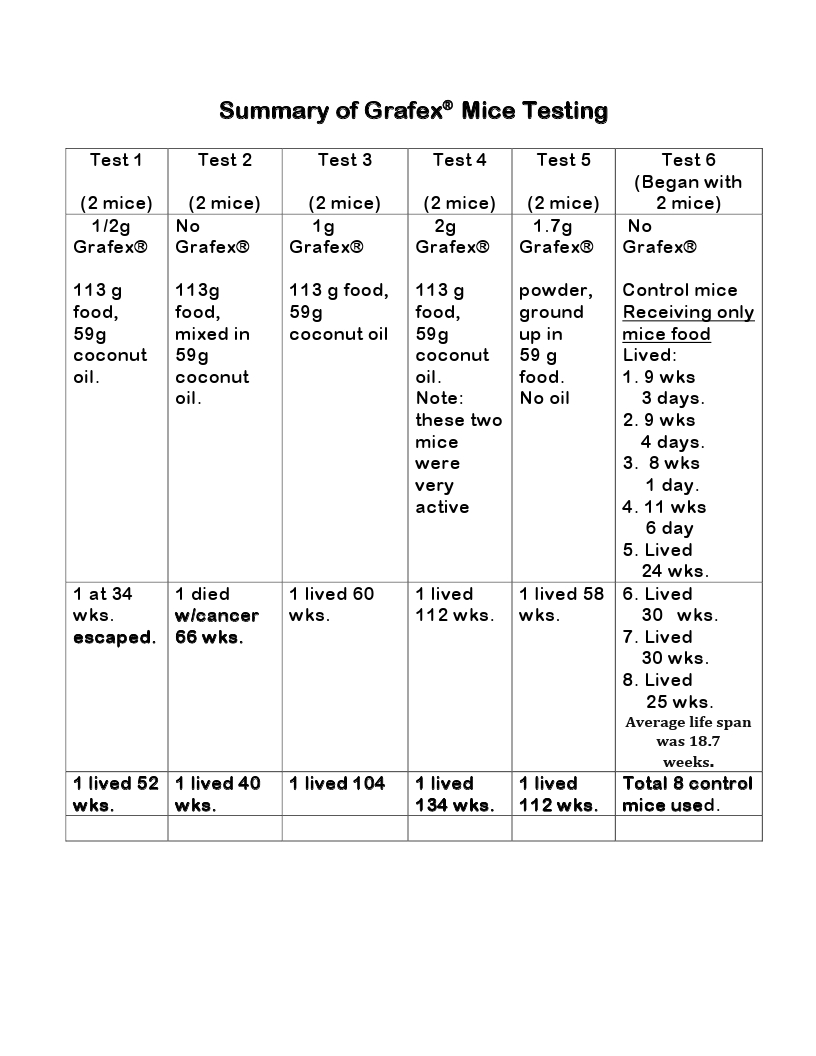
This shows the differences in survival averages of the mice fed Grafex®Super [C-60] . The (.5g) pair averaged 82 weeks,
the (1.7g) Grafex®Super [C-60] ‘dry powder’ pair, averaged 85 weeks, and the pair fed (2g) of Grafex®Super [C-60] daily, averaged 123 weeks, with the oldest mouse surviving 134 weeks (and possibly 138 weeks), matching or exceeding Dr. Desantis’s (1st Mouse Study) oldest living mouse.Considering that each mouse was 8 weeks old upon purchase, and that field mice typically live 24-32 weeks (6 to 8 months), the oldest mouse in this test lived 134 weeks (31 months and 13 days).
To put all of this in perspective, for a given set of living conditions, the use of Grafex® Super [C-60] may increase the average lifespan of mice by (three to four times).
Additionally, because of the short lifespan of mice, nature has not equipped them with an abundance of tumor suppressor genes. In fact, (90% of research mice) are expected to develop tumors in old age.
The use of Grafex® Super [C-60] and the absence of tumor development in two of our mice studies is a very significant finding. With the added longevity of the tests referenced above, one could also conclude that the overall results of the viability study showed that Grafex® Super [C-60] had no significant cytotoxicity effect, as well.
